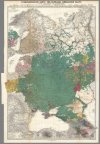Введение. На южном побережье Онежского озера сохранился значительный пласт прибалтийско-финских географических названий. Средневековая этническая история этого региона остается слабоизученной. Это связано с тем, что концом XV в. датируются новгородские писцовые книги, топонимический и антропонимический материал которых остается не вполне востребованным историками. Изучение этого материала дает возможность пролить свет на этническую историю южного Обонежья. Материалы и методы. Основным источником исследования послужила писцовая книга Обонежской пятины 7004 (1495/96) г. Дескриптивный метод исследования состоит в выявлении и фиксации прибалтийско-финских ойконимов (названий сельских поселений) и антропонимов, упоминаемых в писцовых книгах. Прибалтийско-финские антропонимы выявлены на основе анализа формальных показателей заимствования антропонимов. Результаты исследования и их обсуждение. Судя по данным топонимии и антропонимии писцовой книги, население южного Обонежья было смешанным: оно состояло из славян, карел и вепсов. Карелы присутствовали на Олонецком перешейке и в юго-западном Прионежье. Во многом это обусловлено их миграционным потоком из северо-западного Приладожья. Вепсы проживали на обширных территориях юго-восточного и юго-западного Прионежья, бассейна реки Свири и на Оште. Этнографические исследования показали, что многие вепсские поселения сохранились с конца XV в. до середины XX начала XXI в. Заключение. Имеющиеся фрагменты писцовой книги и новгородские акты говорят о том, что к концу XV в. южное побережье Онежского озера было заселено представителями различных этнических групп: славянами, карелами и вепсами. Об этом же свидетельствуют данные антропонимии и топонимии южной части Обонежской пятины.

cyberleninka.ru



.svg.png)






.png)
.png)

